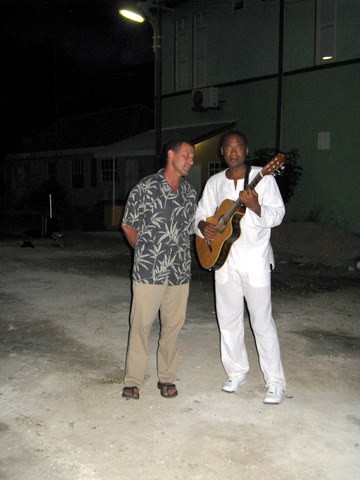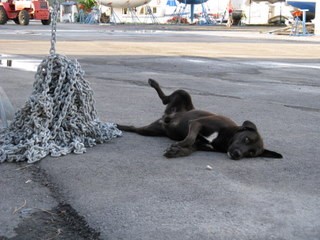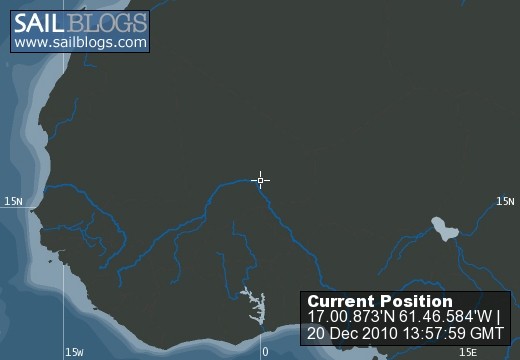
SCAPPATELLA
n. scah-pah-TELL'-ah 1. Italian word for "escapade"; an adventurous, unconventional act or undertaking 2. a journey with a little bit of intrigue; the secret escapade of two lovers 3. an affair, or in Rome, "a quickie in the bushes"
17 April 2010 | Green Island, Antigua to Fajardo, Puerto Rico
10 March 2010 | Bequia
08 March 2010 | Martinique
20 February 2010 | St. Vincent & The Grenadines
30 January 2010 | Bequia (St. Vincent & The Grenadines)
28 January 2010 | St. Lucia
25 January 2010 | St. Lucia
15 January 2010 | Green Island, Antigua
12 January 2010 | Green Island, Antigua
05 January 2010 | Back in Falmouth Harbor, Antigua
04 January 2010 | just south of Jolly Harbor, Antigua
01 January 2010 | Great Bird Island, Antigua
30 December 2009 | Parham, Antigua
29 December 2009 | Rabbit & Redhead Islands, Antigua
26 December 2009 | North Sound, Antigua
22 December 2009 | Antigua
19 December 2009 | St. Croix, USVI
14 December 2009 | Christensaid, St. Croix
10 December 2009 | Christiansted, St. Croix
09 December 2009 | Somewhere in the Caribbean Sea
Sail Speak 101
19 December 2009 | St. Croix, USVI
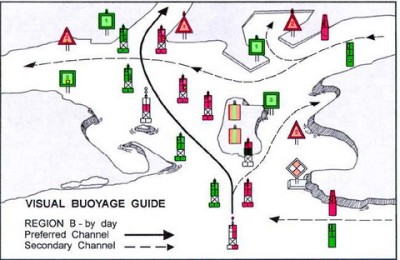
This sailing adventure is complex. Beyond the sport of sailing itself, one needs to learn about weather, electronics, systems, engines, rope work, and the like. And then there's the language of sailing. It just wouldn't do to say right, left, up or down; instead you must master terms such as starboard, port, above and below. These are the simple ones of course, although in the beginning I did have to think "I left my port at home" to help me remember that port was on the left. But beyond these there's an entire slew of words that mean just the opposite of what one might think. Take "brightwork" for example. If I said I had to catch up on my brightwork, you might think I needed to polish the stainless and make the boat all shiny, right? Wrong. Brightwork refers to the varnished parts of the boat, not the bright and shiny stainless. Hmmm....
Then there are the words that have different meanings depending upon what you're doing, and where you're doing it. So a rope is a rope is a rope if it's sitting there all pretty, coiled on the deck. But when that rope comes to life and is actually doing something, it's referred to as a "line". But that's apparantly only in the US. In France, I guess it's still a rope, or a "corde" as they would say in French. Now, if you take that rope - or line - and attach it to a sail, the line becomes a "sheet". Not very intuitive, given that a sheet looks more like a sail than rope.
Ok, say you've mastered the basics of Sailing 101 Speak and are now out sailing. You decide to head into port. (No, you're not going left, nor are you burying your head in a fine bottle of fortified wine from Portugal. You're going into the harbour.) There's a handy little system of buoys to direct you into the correct deepwater channel, away from the reefs and other hazardous areas. Ever heard the phrase "Red, Right, Return"? It means when you're "returning" to the harbour you leave the "red" buoys on your "right". Sounds pretty straightforward, doesn't it? It could be, but that system is only in play in the "the Americas", which is in Region B of IALA Maritime Buoyage System. If you're in Europe - Region A - you use the exact opposite convention! And if you're somewhere else...well, you'd better check. Turns out, prior to 1982 there were 26 different systems in use! Can you imagine how chaotic that would be? It seems all 24 regions acquiesced except for the United States and Europe, so now we have 2 opposing systems. Sound familiar?
Anyway, we're in St. Croix approaching the channel, and the buoy marker is green - no red - no, it's both green AND red! What the heck does that mean? The red is on top, and we're in St. Croix, a US territory, so I guess that means we follow the red, right, return convention? But, we're not on - or even near - the American continent... we're in the Caribbean. So which system do we use? We decide to let our eyes be the judge and we bear left, away from what appears to be a reef lurking under the surface. Good thing, as the next day we watch a beautiful 70' yacht ground themselves on that very reef! Talking with the locals, we learn that they regularly pull boats off of this reef - not to mention the wrecks below.
Sounds like the dual Maritime Buoyage systems might be a good thing for the local tow boats anyway!
Then there are the words that have different meanings depending upon what you're doing, and where you're doing it. So a rope is a rope is a rope if it's sitting there all pretty, coiled on the deck. But when that rope comes to life and is actually doing something, it's referred to as a "line". But that's apparantly only in the US. In France, I guess it's still a rope, or a "corde" as they would say in French. Now, if you take that rope - or line - and attach it to a sail, the line becomes a "sheet". Not very intuitive, given that a sheet looks more like a sail than rope.
Ok, say you've mastered the basics of Sailing 101 Speak and are now out sailing. You decide to head into port. (No, you're not going left, nor are you burying your head in a fine bottle of fortified wine from Portugal. You're going into the harbour.) There's a handy little system of buoys to direct you into the correct deepwater channel, away from the reefs and other hazardous areas. Ever heard the phrase "Red, Right, Return"? It means when you're "returning" to the harbour you leave the "red" buoys on your "right". Sounds pretty straightforward, doesn't it? It could be, but that system is only in play in the "the Americas", which is in Region B of IALA Maritime Buoyage System. If you're in Europe - Region A - you use the exact opposite convention! And if you're somewhere else...well, you'd better check. Turns out, prior to 1982 there were 26 different systems in use! Can you imagine how chaotic that would be? It seems all 24 regions acquiesced except for the United States and Europe, so now we have 2 opposing systems. Sound familiar?
Anyway, we're in St. Croix approaching the channel, and the buoy marker is green - no red - no, it's both green AND red! What the heck does that mean? The red is on top, and we're in St. Croix, a US territory, so I guess that means we follow the red, right, return convention? But, we're not on - or even near - the American continent... we're in the Caribbean. So which system do we use? We decide to let our eyes be the judge and we bear left, away from what appears to be a reef lurking under the surface. Good thing, as the next day we watch a beautiful 70' yacht ground themselves on that very reef! Talking with the locals, we learn that they regularly pull boats off of this reef - not to mention the wrecks below.
Sounds like the dual Maritime Buoyage systems might be a good thing for the local tow boats anyway!
Comments
| Vessel Name: | Scappatella |
| Vessel Make/Model: | Lafitte 44 |
| Hailing Port: | Coloma, CA |
| Crew: | Janet Maineri |
PROFILE
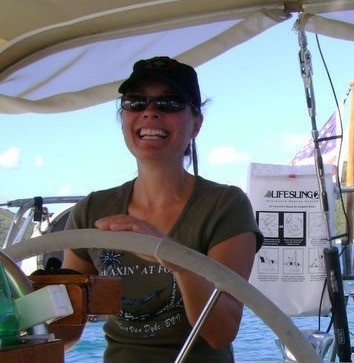
Who: Janet Maineri
Port: Coloma, CA
